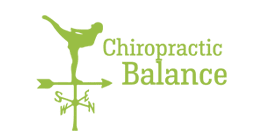
Ear infections, otherwise known as Otitis Media (OM), are one of the most frequent diseases of early infancy and childhood, and one of the most common reasons for children to visit a physician. Between 50-85 per cent of children will have had acute OM by the age of three. Often they will present between the ages of 6-12 months. Recurrent ear infections are also common, affecting 10 – 20 per cent of children within the first year of life.
The most common symptom is ear pain, however children may also display symptoms of an upper respiratory tract infection, fever, abnormal ear tugging, discharge from the ear and irritability.
Because of the high rate of spontaneous recovery from these infections, your physician may recommend reassurance, symptom relief with topical applications and watchful waiting as the first line treatment.
However, complications can occur, so if the condition persists, the eardrum looks red and swollen, or if there is a fever, see your doctor without delay.
Plant medicine can assist to reduce pain and settle the child. An effective traditional method used successfully by generations of parents is a few drops of warmed up (but not hot) infused oil of St John’s Wort (Hypericum perforatum) directly into the child’s ear. St John’s Wort has an impressive array of validated actions that can assist with ear infections: It is analgesic, anti-bacterial, anti-viral and a mild sedative.
Alternatively, a warm poultice can be made out of decongesting herbs. Grate and warm up Ginger (Zingiber officinale) Garlic (Allium sativum) and/or onion and place it over the ear and neck to reduce pain. Cover with a flannel cloth and keep the poultice in place with a towel or cap.
Ensure children drink plenty of fluids in the form of water, tea remedies or medicinal syrups to keep their mucous membranes hydrated and fortified. Fresh lemon and honey, which have their own additional beneficial properties, can be added to herbal infusions to encourage children to consume them.
The best medicinal plants taken as tea remedies whilst fighting an ear infection include:
Plantain (Plantago lanceolata): Nature’s own antibiotic used traditionally to treat colds, coughs, catarrh, fevers, sinusitis and irritated mucous membranes. It helps to soothe inflamed and painful mucous membranes in the respiratory tract.
Thyme (Thymus vulgaris): This powerful and well researched antiseptic herb contains essential oils to fight bacterial, viral and fungal infections.
Elderflower blossom (Sambucus nigra): A clinically proven herb for the treatment of any catarrhal infection and inflammation of the upper respiratory tract. It boosts the immune response and promotes perspiration, therefore helping to lower fever.
Sage (Salvia officinalis): Another anti-infective plant that can come to the rescue with fever, Sage has an anti-hydrotic action that helps to regulates excessive sweating.
If ear infections become recurrent, it is important to address the underlying causes.
Resistance to the common viral and bacterial pathogens that cause OM can be improved with regular daily use of the immune supporting plant medicines mentioned above such as Thyme (Thymus vulgaris) and Elderflower blossom(Sambucus nigra). Echinacea (Echinacea purpurea radix) and Licorice (Glycyrrhiza glabra) are wise additions, helping to improve adaptation to infection triggers.
Other factors linked to OM include food allergy and intolerance. This is well supported by the scientific literature and should be investigated if OM is recurrent. A diet high in processed sugars can also lead to recurrent infection, due to the suppressive effect of sugar on the immune system.
Lessening a child’s exposure to environmental triggers such as cigarette smoke, air pollution and environmental allergens is also important. All of these increase upper respiratory tract congestion, providing a breeding ground for bacteria and viruses.
Of course, Chiropractic care has also been shown to decrease the symptoms of ear infection, as it helps to ensure healthy nerve supply to the structures in the inner ear, and therefore a more effective response to inflammation.
I hope this has given some insight into the natural management of both acute and recurrent ear infections. If the condition worsens, see your primary healthcare provider without delay.
References
Best Practice Journal, New Zealand. (2012). Otitis media: a common childhood illness. Retrieved November 14, 2016, from http://www.bpac.org.nz/BPJ/2012/september/otitismedia.aspx
Nsouli, T., Nsouli S., Linde R., O’Mara F., Scanlon R., & Bellanti, J (1994). Role of food allergy in serous otitis media. Annals of Allergy, 73(3), 215-9. https://www.ncbi.nlm.nih.gov/pubmed/8092554
Ulbricht, C., Basch, E., Cheung, L., Goldberg, H., Hammerness, P., Isaac, R., . . . Wortley, J. (2014). An evidence-based systematic review of elderberry and elderflower (Sambucus nigra) by the Natural Standard Research Collaboration. Journal of Dietary Supplements, 11(1), 80-120. doi: 10.3109/19390211.2013.859852
RM, Froehle. “Ear Infection: A Retrospective Study Examining Improvement From Chiropractic Care And Analyzing For Influencing Factors. – Pubmed – NCBI”. Ncbi.nlm.nih.gov. N.p., 2016. Web. 22 Nov. 2016.
Adapted from an article written by Sandra Clair and sourced from: http://www.nzherald.co.nz/life-style-comment/news/article.cfm?c_id=1503216&objectid=11751406


